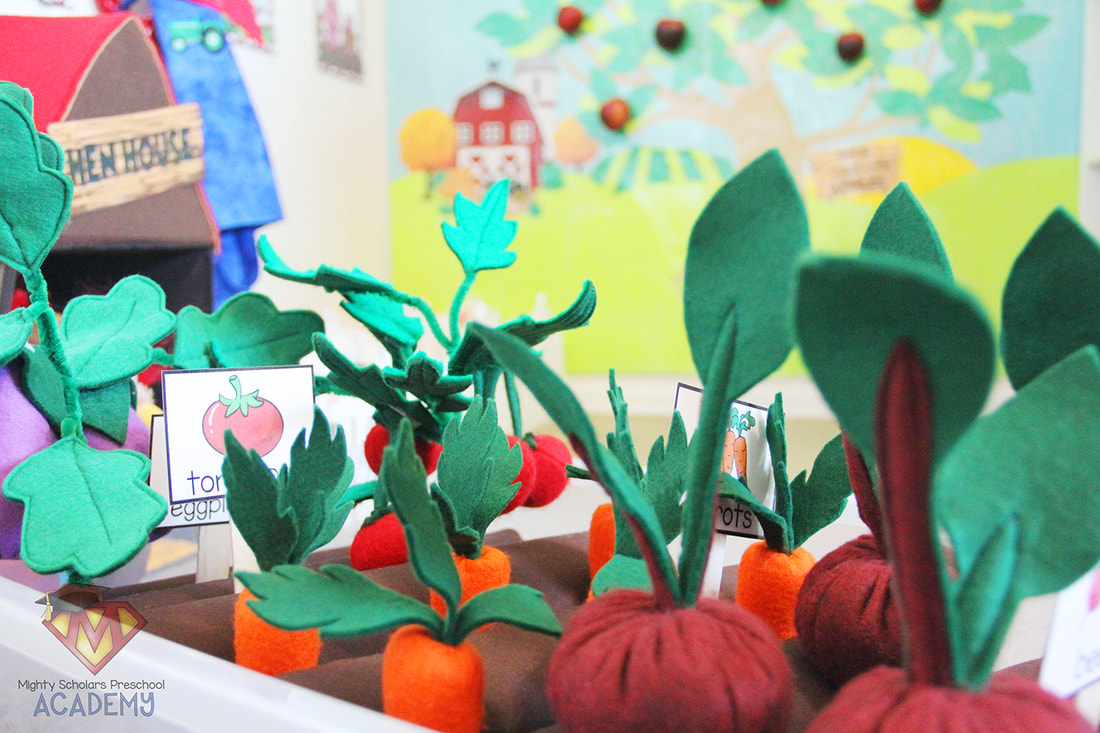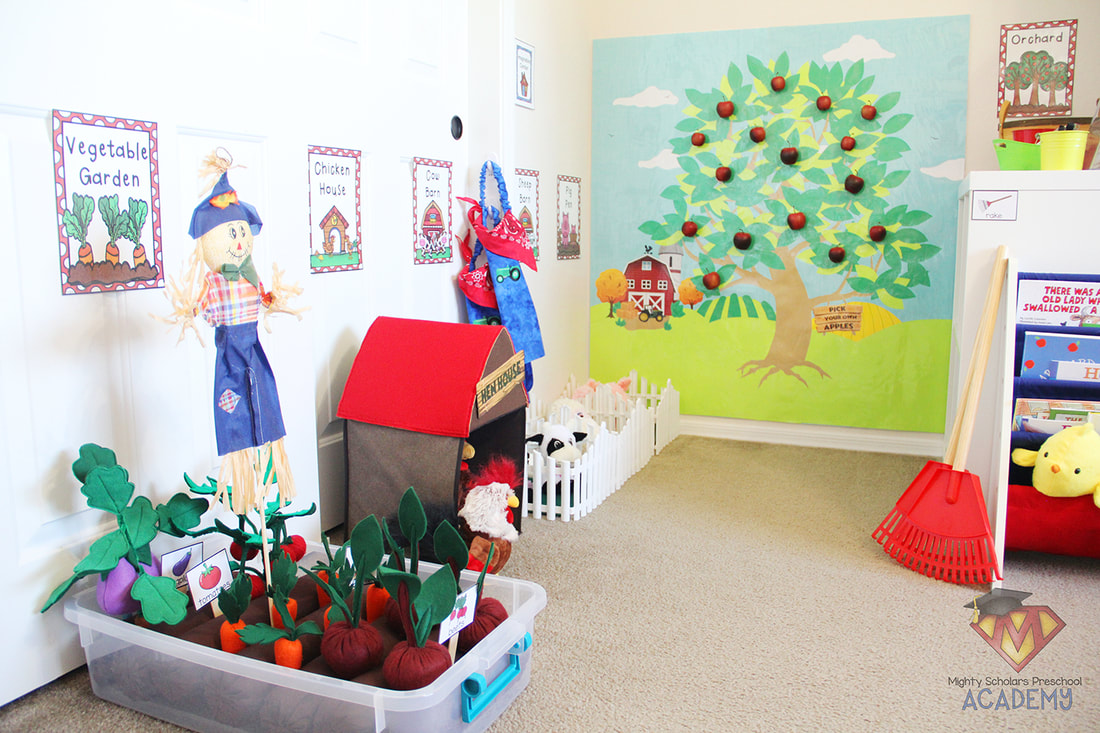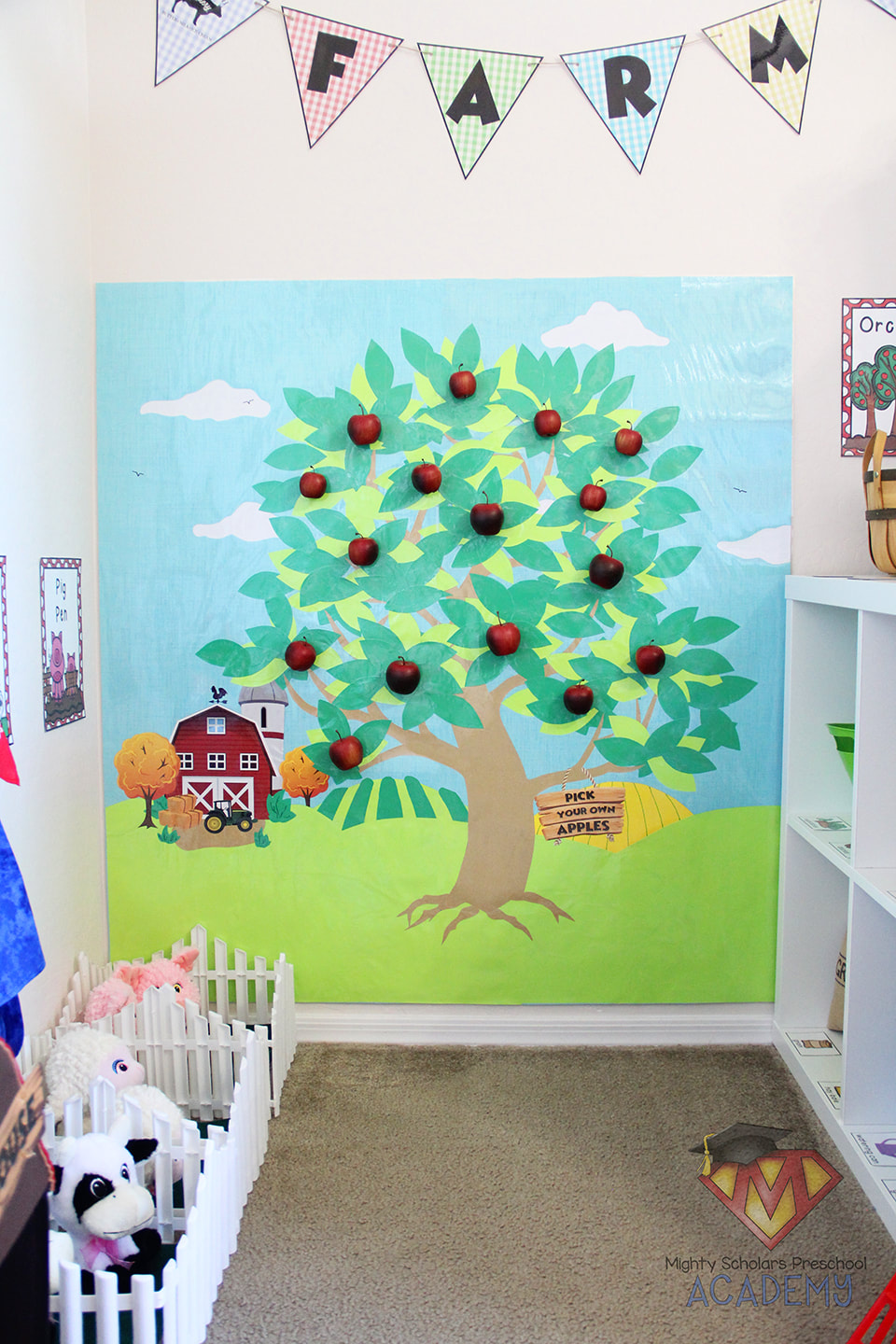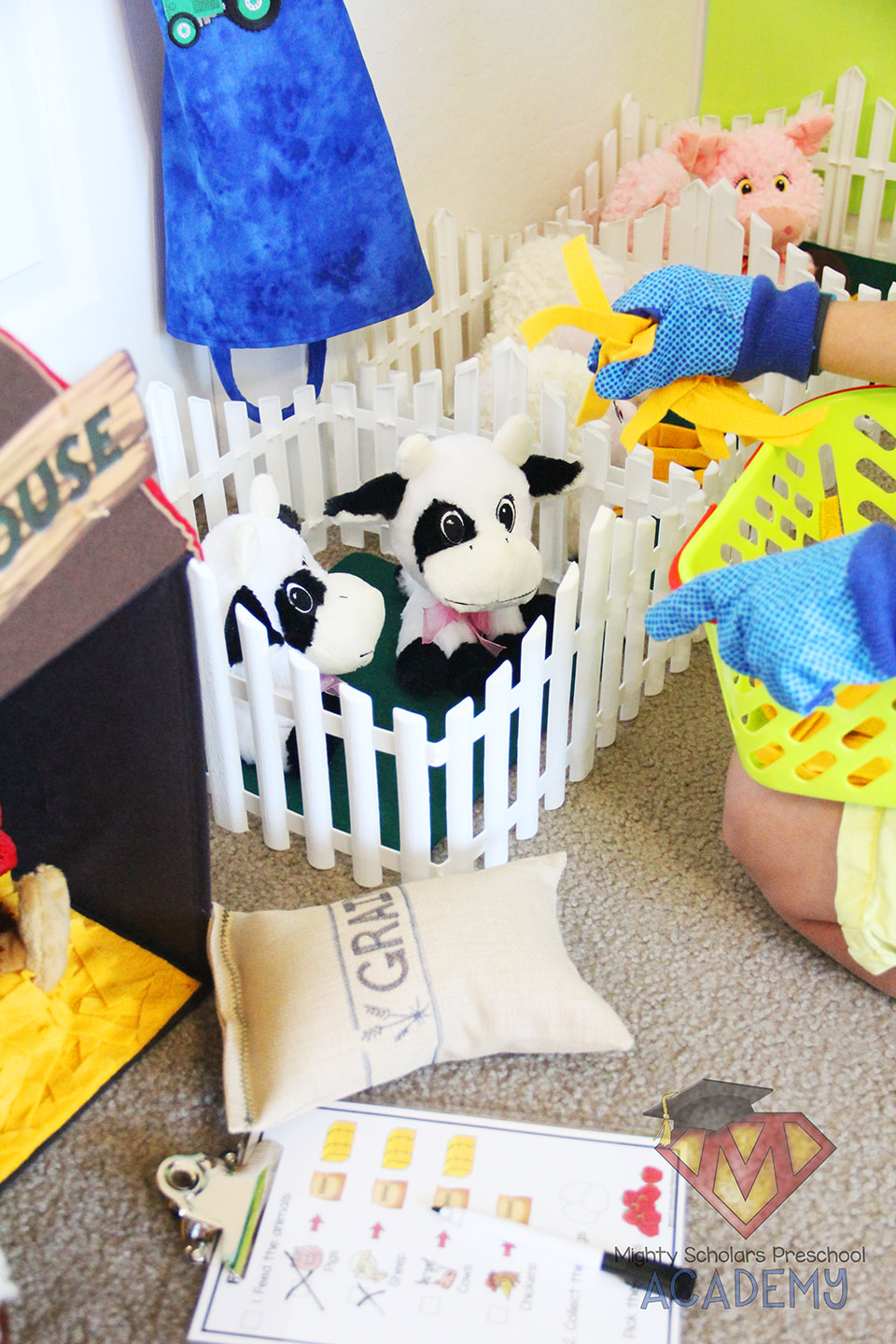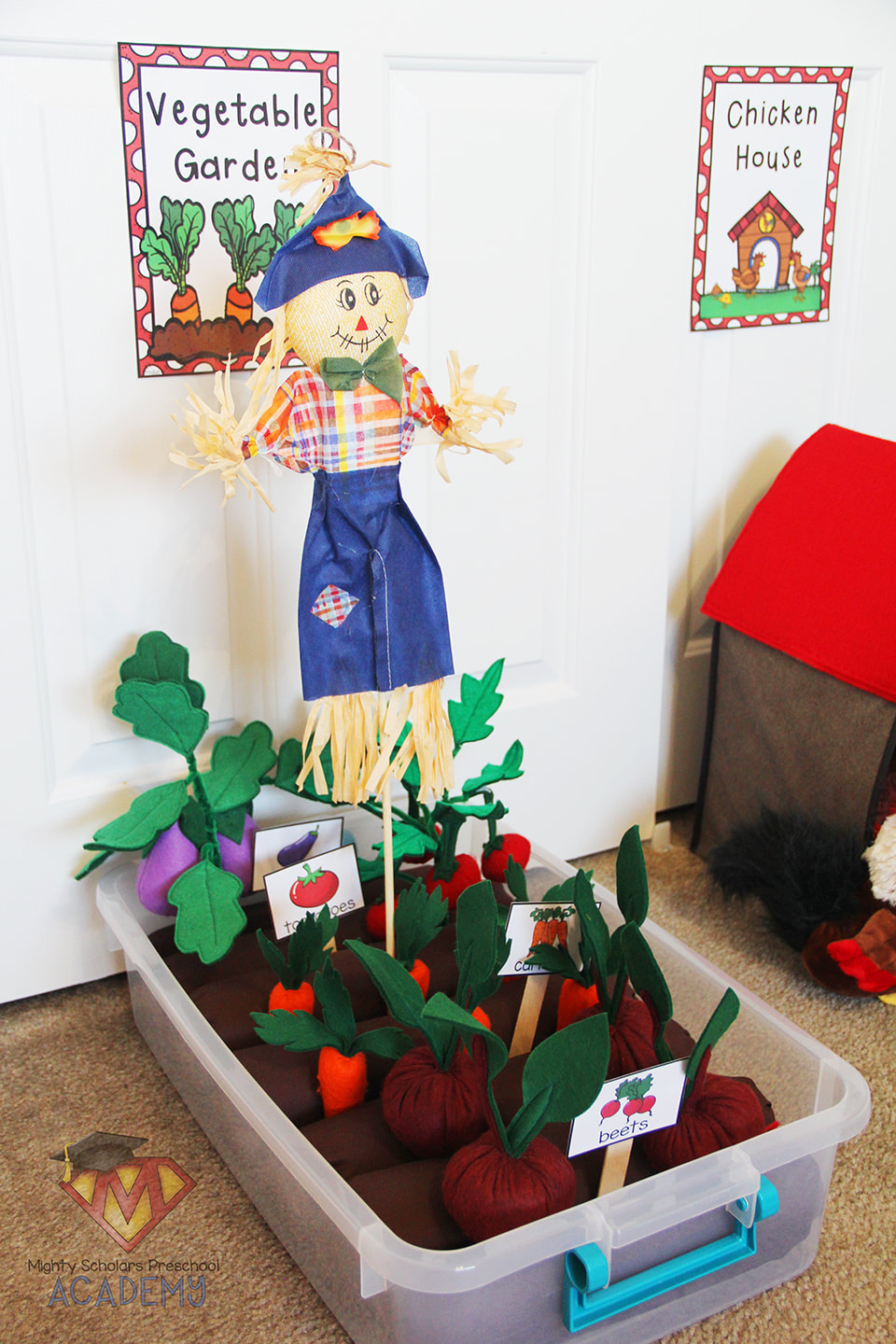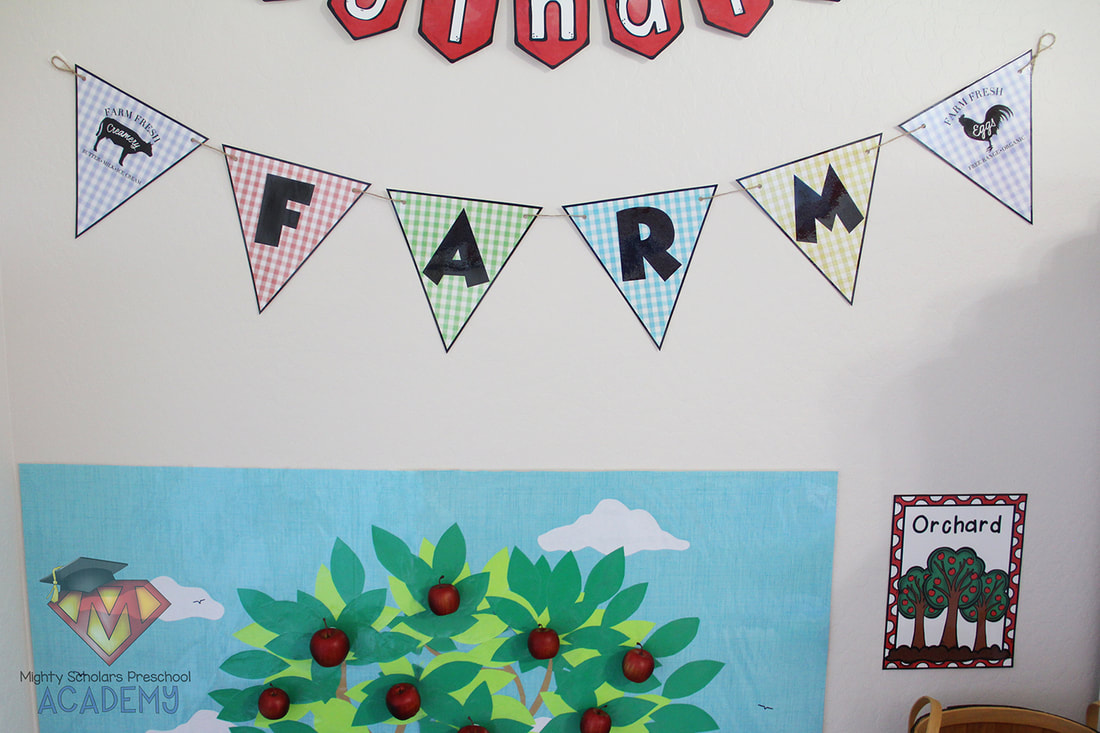|
Farming is a very important part of our lives.
Whether we are personally farming or not, farming and agriculture are an invaluable part of our lives. Without farmers, we wouldn't have the necessary food for survival. Teaching this in early childhood is very important. All the fruits, vegetables, meats, eggs, milk, and grains come from farms. During our Farm and Harvest theme, I teach mini lessons on the importance of farmers, farms and the process or sequence in which animals or plants are cared for correctly. My scholars learn the sequence of growing and harvesting a garden. They'll receive a follow-up lesson later in the school year, as Spring approaches, learning about the parts of plants and growing their own vegetable plant to nurture at home.
Our mural focuses on an apple tree, full of ripe apples to pick and count.
As with all the murals I make for our themes, I start with a base of rolled paper. For our farm and harvest mural I started with a base of blue banner paper and cut light green banner paper into the shape of a long grassy, hilly landscape. The clouds are randomly cut from plain copy paper. The barn, silo, tractor and Fall trees are printed clipart. To add farming fields, I used a light orange-yellow Astrobrights paper hill and dark green Astrobrights paper field rows. I cut a tree trunk shape, freehand, from brown banner paper. The leaves are also cut freehand from Astrobrights paper and glued into position, individually. The "Pick Your Own Apples" sign was made in Photoshop and I've attached it as a freebie, along with a few other goodies, at the end of this blog post.
Every mural I create is laminated and stored in an artwork tube, when not in use. To attach the apples to the tree, I used velcro dots, placing the rough loop side on the tree. The soft side is placed onto the apples, that I purchased in the faux display food section of Hobby Lobby. They are the perfect size for small hands and our apple tree mural. The apples provide the perfect, natural opportunity to count. My scholars naturally count the apples as they pick or place the apples back on the tree. These particular apples have slight differences in size, making it possible for many of my scholars to compare and sort them.
Four different species of farm animals give our little farmers the opportunity to imagine being responsible for other living things.
Our little classroom farm animals include pigs, sheep and cows. The groups of animals have their own pens. The stuffed animals are from Walmart and were purchased during an Easter clearance. The pens are connectable, plastic garden fencing. The pig pen has a randomly cut brown felt sheet for a big mud puddle. The sheep and cow pens have green felt squares for grass.
The hen house is made from a collapsable shelf bin, felt and plastic canvas to shape the roof. Sewing isn't required for this project, if the felt is securely attached together using hot glue. The chicken and rooster were purchased online (link below). The eggs are plastic. I've attached the 'HEN HOUSE' sign freebie at the bottom of this blog post, along with others.
Simple farming supplies are provided to fuel the imagination.
The farming supplies are all individually labeled, using another one of the amazing products from Pocket of Preschool, in the Pocket of Preschool Farm Dramatic Play Pack that can be found HERE. The wall signs for the animal pens, garden and orchard are also from the same dramatic play pack.
Labels for the rake(s) and basket of leaves were not included in the POP dramatic play pack, so I made those labels to complete the supplies I have provided in the center. I made a Gardening Checklist for my scholars to review the sequence of garden planning, planting and harvesting. The Farming Checklist I produced, helps the farmers check off the duties of caring for their small farm. My additional labels and checklists are attached as a freebie at the end of this blog post. The grain bag is made form a small cloth bag, stuffed with polyfill and labeled with permanent markers. The hay is strips of yellow felt. I wrapped unopened seed packets in clear contact paper, so the seeds can still be heard when my scholars shake them over the garden to be "planted". I wanted them to be able to feel the difference in the size and weight of the types of seeds. Being able to also hear the difference in the sound, when they shake the packets, is very important.
Dressing the part adds to the imagination.
Simplifying dress-up makes a world of difference when working with such a small area. Less really does allow for more imagination, so I made farmer aprons with all the characteristics of a typical children's book farmer. The aprons are my regular go-to Montessori style, that allow complete independence. The neck is encased elastic and one simple strap can be easily swung around the back and attached with a small strip of velcro. Each apron required two fat quarters of mottled blue cotton material, a fourth of a red bandana, two extra-large brown buttons and one tractor patch. The red bandana is sewn directly onto the apron as decoration. I made these aprons slightly shorter than my regulars. My own gardening apron is very short, so it doesn't get in the way of kneeling down to work with the soil and plants. I wanted the farmer aprons to be similar, for the same reason.
Learning to follow lists and sequencing is an important skill.
The Farming Checklist helps my scholars care for the animals on the farm, as well as the apple tree. Its a simple visual for them to follow and check off as they complete each farming task.
One of our mini lessons is on the various farm animals and what they eat. My scholars learn that many of the farm animals eat quite a large amount of different types food during the day. Its also very important to collect the eggs each day, to keep them clean and reduce the chance of them getting broken. Later in the school year I reintroduce chickens, as we learn about the life cycle of a bird through hatching eggs in the classroom.
Although we don't see many leaves change color in Arizona, or have the need to rake large amounts of fallen leaves during the Fall season, I wanted to include the experience in our center.
Learning to help with the yard work is a skill lesson most parents would applaud. However, raking silk leaves with an appropriately sized rake is developing something much more than that. The movement associated with raking leaves is called crossing the midline. The midline is the center "line" down the body, essentially separating the right and left side. Crossing the midline is necessary in the developmental process for coordination, brain development, fine motor and more. My scholars enjoy the chance to dump out the basket of leaves and rake the leaves into piles. They've also enjoyed using the leaves to sort and make patterns.
Gardening is a skill that is no longer passed down, generation to generation.
Learning where our food comes from, how it is grown and why its healthy, are all reinforced through the felt and fabric garden. Being able to role-play planting and harvesting a garden, helps to develop skills we take for granted as adults. Young children have a desire to learn about gardening and how things grow. A play garden in the farm/harvest theme is essential.
My garden was adapted from the instructions on the blog: Adventures In Making. I used fabric as the covering for my dirt rolls to reduce friction and make it easier for the vegetables to be pushed and pulled around. Rather than filling my dirt rolls with polyfill, I cut pool noodles to size, wrapped them in two layers of quilt batting and then covered them with the brown cotton fabric. The rolls were stitched together at the ends, to help keep them in place. By doing this, the dirt rolls were sturdy, kept their shape and stayed in place. The vegetables needed roots, to add more realism and help my scholars be able to recognize where the plants take in their water and nutrients to grow. I added the roots by knotting whole strands of embroidery thread in random lengths. The tomato and eggplant greenery was made with pipe cleaners and felt leaves in two shades: lighter on the top of the leaf and darker on the bottom. The garden markers were printed on cardstock, laminated and then hot glued to extra large craft sticks. They're also in the file attached to the end of this blog post, if you'd like markers for the same vegetables.
Gardening requires planning and following a sequential process.
While learning how to garden and the process in which plants are grown and harvested, my scholars enjoy planning, "planting", caring for and harvesting their own garden. Some of my scholars even imagine dirt around the base of the picked vegetables, dusting them off before placing them in the basket. When they care for the plants, I've had a student check the leaves for pests and pretend to release ladybugs, to defend their precious garden plants. Imagination is incredible.
No theme is complete without a banner, sign, or bunting.
Gingham is a farm decor favorite. The bunting is hung with jute and attached to the wall with Command Strips. I've added the farm bunting as a freebie in the files attached to the end of the blog post below.
There are an incredible amount of wonderful children's books for farm and harvest themes.
It's difficult to pick my favorites, since I have so many. My reading center is filled with wonderful picture books to fit the theme. However, if I had to choose, I'd recommend: 'The Farmer's Away! BAA! NEIGH!' by Anne Vittur Kennedy, 'Ten Pigs: An Epic Bath Adventure' by Derek Anderson, 'There Was An Old Lady Who Swallowed a Cow' by Lucille Colandro and one of my oldie-but-goodie favorites, 'Kiss the Cow' by Phyllis Root. I like to place 'Ten Pigs' and 'There Was An Old Lady Who Swallowed a Cow' in my mathematics center. They teach counting and sequencing.
The freebie files for the apple tree sign, labels, checklists, hen house sign and the farm banner
can be downloaded by clicking the links below:
Please note, as a participant in the Amazon Services LLC Associates Program, I may earn a small commission on qualified recommended links.
The Amazon Services LLC Associates Program is an affiliate advertising program designed to provide a means for sites to earn advertising fees by advertising and linking to Amazon.com.
My Amazon Picks to complete the Farm/Harvest theme:
Comments are closed.
|
Categories
All
©2012–2024 Mighty Scholars Preschool Academy
|
||||||||||||||||||||||||||||||

